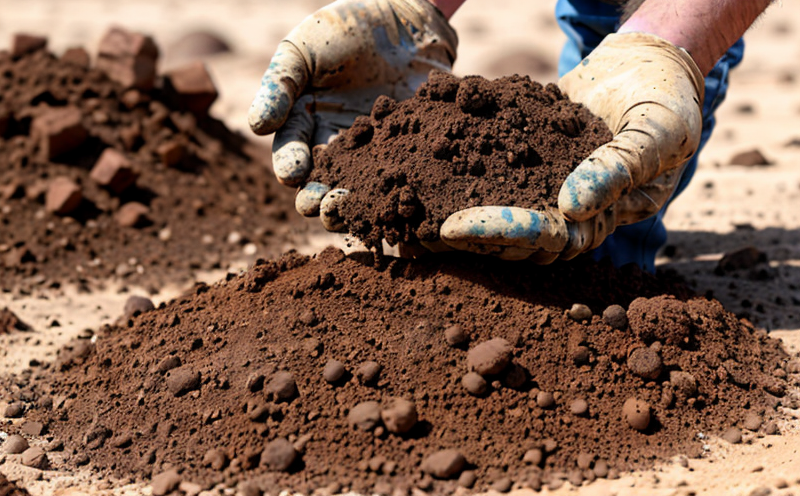Comprehensive Soil and Overburden Characterization Testing
The Comprehensive Soil and Overburden Characterization Testing service is essential for mining operations to ensure environmental compliance, safety standards, and efficient resource management. This testing process involves a series of detailed analyses aimed at understanding the physical, chemical, and mineralogical properties of soil and overburden samples collected from various mine sites.
Our testing protocols are designed to meet international standards such as ISO 17892-4 for grain size analysis and ASTM D2487 for particle size distribution. These methods provide accurate data on the composition, texture, and structure of soil and overburden materials, which is critical for designing effective reclamation strategies and ensuring that mining activities comply with local regulations.
For quality managers and compliance officers, this service offers insights into the potential environmental impact of mining operations. By understanding the specific characteristics of the soil and overburden, they can make informed decisions about how to manage these materials during extraction and after mining activities are complete. This knowledge is also valuable for R&D engineers in developing new processes that minimize disturbance to ecosystems while maximizing resource recovery.
Our testing service includes a range of methodologies tailored to the unique challenges posed by different types of overburden, such as weathered rock or clay-rich materials. For instance, we use X-ray diffraction (XRD) for mineralogical analysis and neutron activation analysis (NAA) for elemental composition. These techniques allow us to identify trace elements that may be valuable resources or contaminants.
In addition to these analytical tools, our team employs advanced sampling methods to ensure that the samples collected are representative of the broader deposit. This includes using GPS coordinates to mark sample locations and ensuring that each sample represents a specific depth and volume within the overburden layer. Once collected, the samples undergo rigorous preparation procedures, including drying, sieving, and grinding, before being analyzed.
The comprehensive nature of our testing ensures that all relevant parameters are considered, from particle size distribution to moisture content and organic matter content. This detailed approach allows us to provide clients with a complete picture of their soil and overburden materials, enabling them to make data-driven decisions regarding resource management and environmental protection.
Our service is not only focused on providing accurate results but also on delivering actionable insights that can be used to optimize mining operations. By understanding the exact composition of soil and overburden, companies can reduce waste, improve efficiency, and minimize environmental impact. For procurement teams, this information helps in sourcing materials more sustainably and cost-effectively.
Applied Standards
Our Comprehensive Soil and Overburden Characterization Testing service adheres to a variety of international standards that ensure the accuracy and reliability of our results. Key among these are ISO 17892-4, which provides guidelines for grain size analysis using sieves, and ASTM D2487, which outlines procedures for particle size distribution determination.
For mineralogical analyses, we follow methods prescribed in ASTM E563, which details the use of X-ray diffraction (XRD) to identify crystalline phases present in soil and overburden samples. Additionally, neutron activation analysis (NAA), as specified in ISO 17892-5, is employed for elemental composition determination.
These standards are crucial because they provide a consistent framework that allows us to compare results across different sites and time periods. This consistency is particularly important when monitoring changes over the life cycle of a mining operation or evaluating the effectiveness of reclamation efforts.
Quality and Reliability Assurance
We are committed to delivering high-quality, reliable test results through robust quality control measures. All samples undergo multiple rounds of verification before final analysis is conducted by our experienced technicians. This includes double-checking calculations and re-running analyses on a subset of samples.
To ensure that our equipment remains calibrated and accurate, we participate in proficiency testing programs organized by recognized bodies such as the National Institute of Standards and Technology (NIST) in the United States or similar organizations around the world. These programs provide an external validation of our laboratory’s capabilities and help us identify areas for improvement.
Our quality assurance protocols extend beyond just technical accuracy; they also encompass ethical practices. We adhere strictly to data integrity principles, ensuring that all information collected during testing is reported accurately without bias or manipulation. This commitment to transparency builds trust with our clients and helps maintain their confidence in the reliability of our services.
Use Cases and Application Examples
- Environmental Impact Assessment (EIA): Soil and overburden characterization plays a crucial role in EIA studies conducted before starting new mining projects. It helps determine baseline conditions which serve as references for monitoring changes during and after operations.
- Reclamation Planning: Understanding the exact composition of waste rock or tailings allows engineers to design reclamation plans that effectively return land to its original state or repurpose it for other uses like agriculture or urban development.
- Risk Management: Identifying hazardous substances early in the project lifecycle enables proactive measures to mitigate risks associated with exposure to harmful chemicals or dust particles.
- Resource Recovery Optimization: Detailed analysis of overburden can reveal valuable minerals or metals embedded within it, guiding decisions on whether to extract these resources and how best to do so sustainably.
In all cases, the information derived from our testing service contributes significantly towards achieving sustainable development goals by balancing economic benefits with environmental protection.





